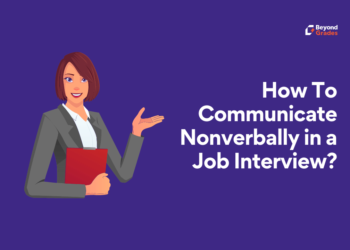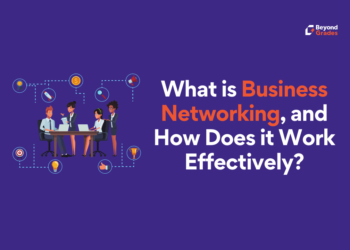[ad_1]
The year 2020 has been pathetic for many people dependent on 9-5 jobs for their living. As per the ILO estimates, 25 million jobs are estimated to be lost due to the pandemic. In India alone, 4 million young minds have lost their jobs. The situation is worsening down the lane. But, during these times, the freelance industry is booming all around the world. So let’s get into what is freelancing and how to become a freelancer?
What is Freelancing?
A freelancer is a self-employed individual who offers services to multiple clients at one time. Freelance work is typically for a short term basis. Besides, freelancers charge hourly or daily rates for their work.
However, a freelancer is not an official employee for a company, and other businesses can subcontract them. Some of the most in-demand freelance opportunities are within creative industries such as copywriting, graphic design, photography, or website development.

Is India shifting its workforce towards freelancing?
A study conducted by Mckinsey states that around 20-30% of developed markets are engaged in freelancing or gig economy. In India, the freelance industry is estimated to rise by $20 to $30 billion by 2025. If reports are to be believed, India is home to the second-largest numbers of freelancers after the USA. A whopping 15 million individuals work independently in different sectors like IT, sales, design, finance, content development and many more.

Freelancing is soon emerging as an alternative for IT jobs as freelance coders and software developers easily earn up to $ 500/hour. Recent reports suggest that work from home has improved work performance by 13%, adding more to organizations’ well-being and a significant reason behind the increase in demand for freelancers.
It is not wrong to accept freelancing as the new trend in the present scenario. As of now, companies are more focused on quality content rather than seeking in-office work hours from their employees.
How to become a freelancer?
It’s evident that freelancing is the new trend, so if you have decided to become a freelancer, the numbers say you are on to something good. The freelance market is competitive, and you have to grow accordingly. Follow these seven simple yet effective steps to start your career as a freelancer:
Step 1: Determine your niche and consider if freelancing is for you.
Freelancing needs to be approached with a clear mindset. Being independent of your work is a great thing until you are disciplined and reliable. Choose a niche, which you think you are good at and can get paid for. May it be copywriting, creatives, web development, UI/UX developer, etc.
If you consider being a freelancer, you should abide by a daily work routine and be ready to juggle multiple projects at once. A freelancer should continually look for new projects to maintain a steady workflow.
If you’re still working full time, don’t immediately quit your job. Instead, combine freelancing and full-time work until you accumulate enough clients and connections to support yourself as a freelancer.
Step 2: Choose a platform
The first thing to do after opting for freelancing is to choose a platform to build your network. Most freelancers connect with several freelancing websites like Freelancers.com, Fiver, Upwork to find work. Social media platforms such as LinkedIn can also be a great place to upskill your freelancing journey, build a network and get your hands on some gigs.
Some freelancing platforms, such as Hiremotely, allow only top freelancers to join their network and connect them with clients who are serious about the work and are likely to pay good numbers for quality work. The admission process for such platforms is lengthy and contains several tests, and might take even up to few weeks for enrollment. However, it’s worth the wait.
Step 3: Build your portfolio
Since freelancing involves hiring remote workers for a job, the employer or the client know you by your portfolio. Your portfolio should describe your skills, experience, past projects, and work appreciation by other clients. It should consist of all the necessary information which the employer or the client needs to know. Here are four simple yet effective tips that can help you leverage your portfolio:
- Convey your past experiences in the field
Before handling the work, the employer or the client needs to know about your experiences and skills as a freelancer to measure the quality of work they can expect from you. So, if you have several areas of expertise, your portfolio should reflect the same.
Try to make your portfolio exciting. A portfolio brings out your past work and skills in front of the employer. Creativity itself is an in-demand skill and can be reflected by your portfolio. Make it more than just your “employment history”.
- Provide additional information
Make sure you answer the why, what, and when? For each of your portfolio items. For example: Suppose you worked on a copywriting project for XYZ company and updated it in your portfolio. The employer is keen to know “Why you worked for that particular company? What was the project all about? and When did you start and finish the project?”. To get a clear understanding of your skillset and work.
- Regularly update your portfolio
Don’t let your portfolio become obsolete. Make sure to add any soft skills that you have learned recently. If any new projects are not yet updated, do it now! Make your portfolio look updated. Employers focus on the candidates who have the ability to grow over time.
Listen to our podcast: How to build your career as a freelancer?
Step 4: Determine your charges
While your charges depend on your skills, don’t work for peanuts. If you are new to freelancing, you can’t charge the amount which a freelancer with decades of experience charges. Research the market rates and set your prices accordingly.
Step 5: Build your network and find work.
Networking plays an essential role in the career growth of a freelancer. Since you have opted to be independent, it also involves searching for new clients who can provide you with regular work. LinkedIn is the best way to do so. Build your profile on LinkedIn and connect with people who can help you in your freelancing journey.
While finding work, choose those projects which you think can be completed by you. Accepting work and not finishing it is considered unprofessional in the industry. Try to stick to your deadlines.
So, these were the 5 steps to become a freelancer. There are several freelancing websites to start from, like Upwork, Freelancer.com, Fiverr etc. All you need to do is understand if freelancing is your go-to option and follow the above steps to become a successful freelancer.
[ad_2]
Source link










